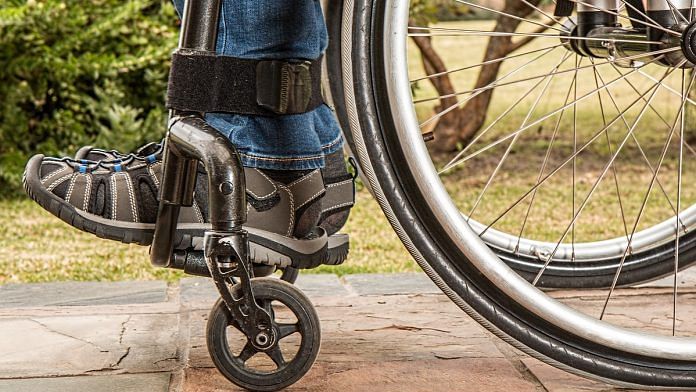Today, there are around 131 million wheelchair users around the world. Most are relying on the same decades-old technology to get around. That’s because the wheelchair, for all that it has done to improve the quality of people’s lives, has changed little over the course of the past generation.
Until now.
The digital technologies shaping the Fourth Industrial Revolution also have the potential to make substantial improvements to people’s quality of life. Here are three tech-driven start-ups and entrepreneurs working to bring the power of digital transformation to bear on the wheelchair.
The self-driving wheelchair
In South Korea, Guru IoT is, as the name suggests, an Internet of Things company. It has created a self-driving wheelchair using the concept of digital twinning. Stored on a cloud-computing platform, a detailed map can be accessed by the wheelchair, allowing it to navigate its way round its environment safely. This approach is less expensive than equipping it with sensors connected to the internet, transmitting and receiving data in real-time.
It is fitted with additional safety technology and proximity sensors, but the use of the digital twin map – rather than technology using global positioning data – means the chair could be cheap enough to become a mass market product.
“Our self-driving wheelchair is the prime example of showing that robots and humans can work together well from a human-robot interaction perspective,” said Song Su-han, president of Guru IoT.
Also read: The new AI war and how US, China, and EU are fighting it
An accessory with accessibility in mind
Say hello to Luci. Luci has been designed to augment existing powered wheelchairs and transform them into smart chairs.
Designed and manufactured in the US, Luci will equip a wheelchair with a frame containing eight sensors to guide the chair and avoid obstacles. Described as “understated but functional” by Jered Dean, the co-founder of Luci, the sensors use ultrasonics, radar and cameras to perform tasks like slowing the chair down safely to prevent accidents.
Safety was one of the key concerns of the Luci development team, who ran a series of crash tests using wheelchairs to measure the harm different types of impact and accident can do to a chair user. They also found that 87% of power wheelchair users reported at least one tip or fall in the past three years.
“The world is a beautiful, dangerous place,” a statement on the Luci website says. “We believe power wheelchairs should make it more beautiful and less dangerous for the people in them.”
3D printing a smart wheelchair
Avoiding tip-related accidents led to the invention of the Phoenix I chair. It won Scottish designer and entrepreneur Andrew Slorance the Mobility Unlimited Challenge, a global competition run by Toyota.
Speaking to the BBC, Slorance described an accident in the early 1980s that left him needing to use a wheelchair. “Since then, nothing has really happened in wheelchairs,” he said. “They’ve made them smaller or more compact. But the technology hasn’t changed for nearly four decades.”
His creation is made from 3D-printed carbon fibre and is extremely lightweight. It can be switched into ‘intelligent mode’ so that the chassis and wheels move in sync with the rider.
This gives the chair greater agility and greater stability at the same time.
This article was previously published in the World Economic Forum.
Also read: AI can worsen climate crisis, but these 4 steps can help us use it responsibly






